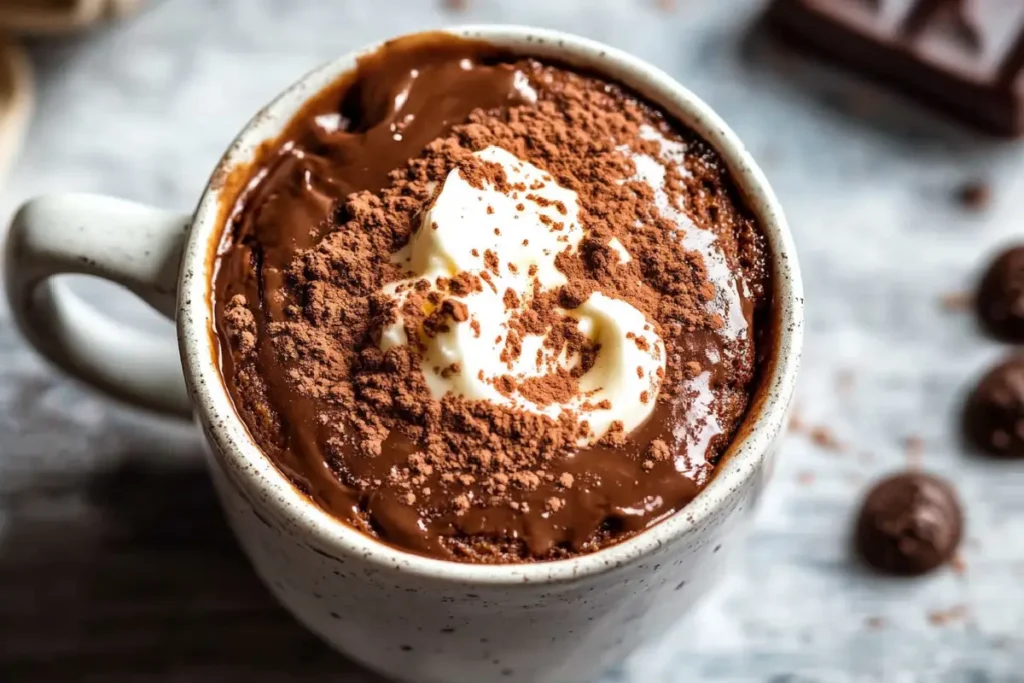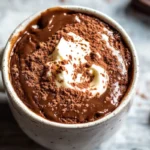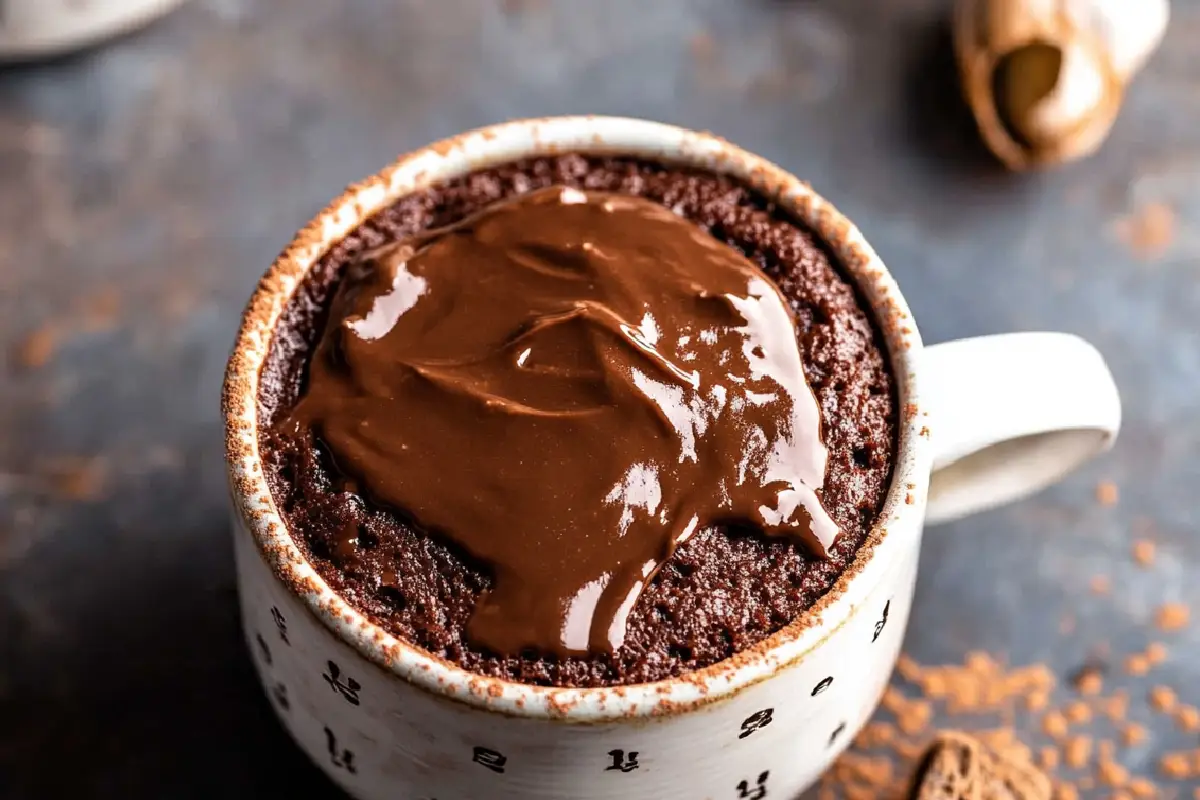Table of Contents: Can I Use a Bowl Instead of a Mug for Mug Cake?
Introduction: Can I Use a Bowl Instead of a Mug for Mug Cake?
Ever craved a warm, gooey mug cake but found yourself staring at an empty mug rack? You’re not alone! Mug cakes are the ultimate lazy-day dessert hero—decadent, quick, and ridiculously easy. But here’s the twist: Can I Use a Bowl Instead of a Mug for Mug Cake? Spoiler: Absolutely! In fact, swapping your mug for a bowl might just upgrade your dessert game. Imagine a fluffy chocolate cake with melty pockets of chocolate, ready in 5 minutes, no fancy equipment needed.
Fun fact: Mug cakes exploded in popularity during the pandemic as comfort food hacks went viral. But here’s the kicker—using a bowl gives you more room for creativity (think toppings galore!) and even better texture. If you loved our 3-Minute Chocolate Chip Cookie in a Cup, you’ll adore this bowl-friendly twist. Let’s dive into why this hack is a game-changer and how to nail it every time!
What is a Mug Cake in a Bowl?
Let’s address the elephant in the room: Why call it a “mug cake” if we’re using a bowl? Great question! The name “mug cake” stuck because, well, it’s catchy—like calling your dog “Tiny” when they’re the size of a small horse. Technically, this is a microwave cake, but “mug cake” just rolls off the tongue (and fits nicely in Instagram captions).
Think of it as the rebellious sibling of the classic mug cake. Want to win hearts? As the old saying goes, “the way to a person’s heart is through their stomach”—and this bowl-sized delight will have them swooning. Ready to break the mug mold? Let’s bake!
Why You’ll Love This Recipe

- No Mug? No Problem!
Forget hunting for that one clean mug. A bowl gives you more space for mixing, prevents spills, and even cooks more evenly. Plus, it’s Instagram-worthy—pile on whipped cream, sprinkles, or fresh berries! - Cheaper Than a Bakery Run
Skip the $7 slice at the café. This recipe uses pantry staples like flour, sugar, and cocoa powder. Total cost? Less than a fancy coffee. - Toppings Heaven
Customize your cake with chocolate chips, peanut butter swirls, or a scoop of vanilla ice cream. It’s like a dessert buffet in a bowl!
If you’re obsessed with our 5-Minute Brownie in a Mug, this recipe is its bigger, bolder cousin. Ready to become a microwave maestro? Let’s get mixing!
How to Make a Mug Cake in a Bowl
Quick Overview
- Prep Time: 2 minutes
- Cook Time: 1.5–2 minutes
- Total Time: <5 minutes
- Key Perks: No oven, minimal cleanup, endlessly customizable.
Key Ingredients
(Include a high-quality image of ingredients: flour, sugar, cocoa powder, milk, oil, baking powder, salt, and chocolate chips)
- 4 tbsp all-purpose flour
- 2 tbsp granulated sugar
- 1 tbsp unsweetened cocoa powder
- 3 tbsp milk (or dairy-free alternative)
- 1 tbsp vegetable oil
- ¼ tsp baking powder
- Pinch of salt
- 1 tbsp chocolate chips (optional, but highly recommended)
Step-by-Step Instructions
- Mix Dry Ingredients: In a microwave-safe bowl, whisk flour, sugar, cocoa powder, baking powder, and salt.
- Add Wet Ingredients: Pour in milk and oil. Stir until smooth—no lumps! Fold in chocolate chips.
- Microwave Magic: Cook on high for 1 minute 30 seconds. If needed, add 15-second bursts until the center is just set.
- Top & Devour: Let it cool for 30 seconds (patience is hard, we know!), then add ice cream or berries.
Pro Tip: Don’t overmix! A few streaks of flour are okay—overmixing = rubbery cake.
What to Serve With Your Bowl Mug Cake
- Classic Combo: Vanilla ice cream + hot fudge drizzle.
- Fruity Twist: Fresh strawberries or raspberries.
- Coffee Pairing: Dunk bites into a mug of salted caramel latte.
Top Tips for Perfecting Your Bowl Mug Cake
- Bowl Size Matters: Use a 12–16 oz bowl to prevent overflow.
- Adjust Cook Time: Microwaves vary! Start with 1 minute, then add 15-second increments.
- Egg-Free Hack: No eggs needed—baking powder does the heavy lifting.
Storing and Reheating Tips
Mug cakes are best fresh, but if you must save leftovers:
- Fridge: Cover with plastic wrap for up to 1 day.
- Reheat: 15–20 seconds in the microwave. Pro tip: Add a splash of milk before reheating to revive moisture.
FAQ: Can I Use a Bowl Instead of a Mug for Mug Cake?

Q: Can I use any bowl for a mug cake?
A: Not all bowls are created equal! Always use a microwave-safe bowl (check the label). Glass or ceramic works best—avoid plastic or metal.
Q: Will the texture be different in a bowl vs. a mug?
A: Surprisingly, yes! A wider bowl cooks more evenly, giving you a fluffier center and fewer soggy edges.
Q: Can I double the recipe in a larger bowl?
A: Absolutely! Double the ingredients and use a 20-oz bowl. Adjust cook time by adding 15-30 seconds.
Q: Can I make this vegan or gluten-free?
A: Easy swaps! Use almond milk and flax eggs for vegan, or gluten-free flour 1:1. Taste stays delicious!
Q: Why did my cake overflow?
A: Overfilling is the culprit. Stick to a 12–16 oz bowl and leave 1-inch space at the top.
Conclusion: Can I Use a Bowl Instead of a Mug for Mug Cake?
So, can you use a bowl instead of a mug? Absolutely—and once you try it, you might never go back! Whether you’re a midnight snacker or a dessert-for-breakfast rebel, this recipe is your new best friend. Tag us on Instagram with your creations, and don’t forget to explore our 10 Crazy Mug Cake Variations for more quick treats. Happy microwaving! 🍫✨

The Best Mug Cake
- Total Time: 4 minutes
- Yield: 1 serving 1x
- Diet: Vegetarian
Description
“Craving dessert in 5 minutes? Learn Can I Use a Bowl Instead of a Mug for Mug Cake? with this foolproof recipe! Fluffy, chocolatey, and endlessly customizable, no oven or fancy tools needed. Perfect for midnight cravings or lazy weekends!”
Ingredients
- 4 tbsp all-purpose flour (or gluten-free 1:1 blend)
- 2 tbsp granulated sugar
- 1 tbsp unsweetened cocoa powder
- 3 tbsp milk (dairy or plant-based)
- 1 tbsp vegetable oil (or melted coconut oil)
- ¼ tsp baking powder
- Pinch of salt
- 1 tbsp chocolate chips (optional)
Instructions
- Mix Dry Ingredients: In a microwave-safe bowl, whisk together flour, sugar, cocoa powder, baking powder, and salt.
- Add Wet Ingredients: Pour in milk and oil. Stir until smooth (no lumps!). Fold in chocolate chips.
- Microwave: Cook on high for 1 minute 30 seconds. If needed, add 15-second bursts until the center is just set.
- Cool & Top: Let rest 30 seconds, then add ice cream, berries, or whipped cream.
Notes
- Substitutions: Use almond milk for vegan, or swap cocoa powder for matcha.
- Avoid Overflow: Stick to a 12–16 oz bowl.
- Storage: Best fresh, but leftovers keep covered in the fridge for 1 day.
- Prep Time: 2 minutes
- Cook Time: 2 minutes
- Category: Dessert
- Method: Microwave
- Cuisine: American
Nutrition
- Serving Size: 1 bowl
- Calories: 350
- Sugar: 28g
- Sodium: 120mg
- Fat: 14g
- Saturated Fat: 3g
- Unsaturated Fat: 8g
- Trans Fat: 0g
- Carbohydrates: 52g
- Fiber: 3g
- Protein: 5g
- Cholesterol: 5mg
Keywords: Can I Use a Bowl Instead of a Mug for Mug Cake, bowl mug cake recipe, microwave cake in a bowl, 5-minute dessert, easy chocolate mug cake

